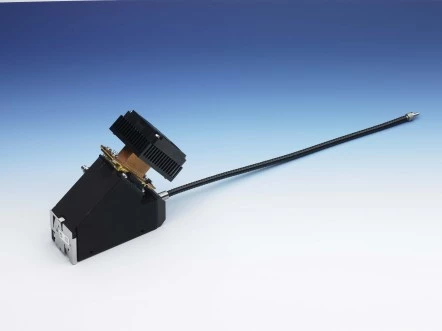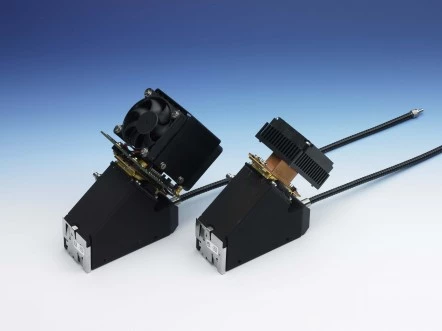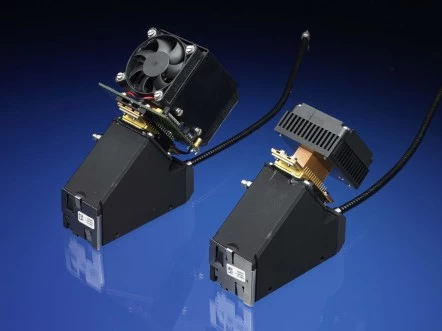Description
The spectrometers of the PGS family are designed for use in the NIR. InGaAs (indium-gallium-arsenide) is used as a detector material in this wavelength range. The special combination of aspheric collimator and focusing lens allows the use of plane gratings optimized for the NIR, while maintaining good flat field correction of the spectral imaging. Excellent long-term stability is ensured by the permanent connection of all optical components.
Central body
In the PGS family, a special aluminum alloy (coefficient of expansion a ~ 13 x 10-6) is used for the central body. This housing is the carrier of the blazed grating and of the aspheric collimator and focusing lens. The input fiber and the detector are permanently connected to the central body, therefore providing excellent stability.
Gratings
The gratings for the PGS family are mechanically ruled or holographically recorded plane gratings. The maximum efficiency is adapted to the special wavelength range in the NIR. The grating surface with the clear diameter of the lenses is dimensioned so that the light of a fiber with NA of up to 0.37 can be hold.
Input fiber
The coupling of light is performed in the standard way via a glass monofiber. These fibers have a diameter of 600 µm and a NA = 0.22. The end of the fiber features a slit with a height of 500 µm (NIR 1.7) or 250 µm (NIR 2.2). The slit heights at the entrance are adapted to the pixel heights of the InGaAs arrays. A crosssectional conversion similar to the silicon detectors is not necessary.
Detector
For the PGS NIR 1.7 standard InGaAs is used for the wavelength range up to 1700 nm. Detectors with 256 or 512 elements are available. To go up to the wavelength range of 2.2 µm the use of Extended InGaAs is necessary. In the PGS NIR 2.0 and PGS NIR 2.2 detectors with 256 elements are used. For the Extended InGaAs arrays, blocking filter for suppressing the 2nd diffraction order is applied to the array.
PGS NIR 1.7-256 Spectrometer
Specifications
| Monochromator Type: | Flat Field Grazing Incidence |
|---|---|
| Effective Focal Length: | Not Specified |
| Diffraction Grating: | 484 lines/mm |
| Grating Blaze Wavelength: | 1200 nm |
| Spectral Range: | 960 – 1690 nm |
| Linear Dispersion (Avg): | Not Specified |
| Spectral Resolution (Avg): | 8 nm |
Features
Optical components of the PGS family
- blazed plane gratings
- aspheric lenses
- mono-fiber with slit as optical input
- cooled InGaAs photodiode array as opto-electronic output
Benefits
- Compact without movable parts
- Permanently aligned
- Robust even in harsh environments
- Fast and simultaneous read-out
- Permanently calibrated
- High dynamic range
- High light sensitivity
- High reproducibility
- Low temperature drift
Frequently Asked Questions
What is the benefit of the PGS spectrometer being compact without movable parts?
What is the maximum efficiency of the gratings used in the PGS spectrometer?
What material is used as a detector in the PGS spectrometer?
What is the diameter of the input fiber used in the PGS spectrometer?
What is the wavelength range of the PGS spectrometer?
Similar Products
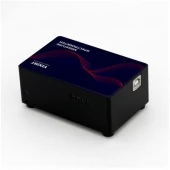
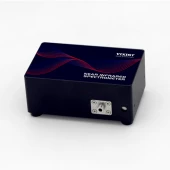
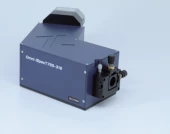
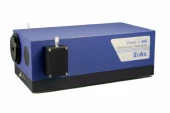
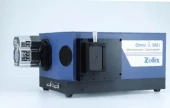
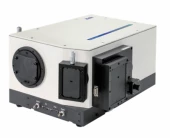
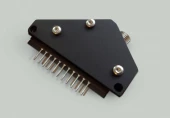
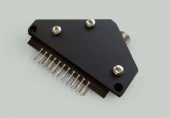
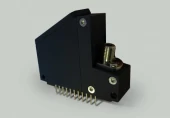
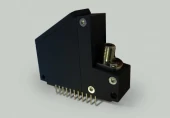
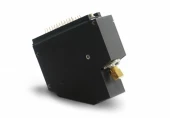
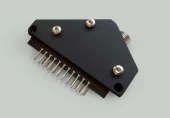
Your inquiry has been received.
Create an account by adding a password
Why create an account?
- Auto-complete inquiry forms
- View and manage all your past messages
- Save products to your favorites
- Close your account anytime — no hassle
